Search results for: 'stone a'
-
 Paleolithic hand axe
Paleolithic hand axePrehistoric stone tool. It was the universal tool of the older Stone age and could be used as a borer or a cutter. From a Swiss museum collection. Found in Ouarzazate, Morocco.
Price: on request Paleolithic hand axe
Paleolithic hand axePrehistoric stone tool. It was the universal tool of the older Stone age and could be used as a borer or a cutter. From a Swiss museum collection. Found in Morocco, North Africa.
Price: on request Neolithic axe head
Neolithic axe headFinely crafted tool made of nice dark grey flint. From the New Stone Age of Europe. A specimen of the thick butted type with thin blade.
Price: on request Paleolithic hand axe
Paleolithic hand axePrehistoric stone tool. It was the universal tool of the older Stone age and could be used as a borer or a cutter. From a Swiss museum collection. Found in Algeria, North Africa.
Price: on request Huge Paleolithic hand axe
Huge Paleolithic hand axePrehistoric stone tool. It was the universal tool of the older Stone age and could be used as a borer or a cutter. From a Swiss museum collection. Found in Morocco, North Africa.
Price: on request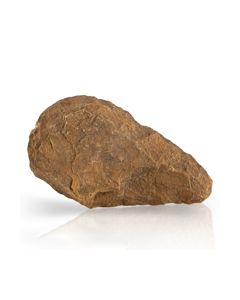 Paleolithic hand axe
Paleolithic hand axePrehistoric stone tool. It was the universal tool of the older Stone age and could be used as a borer or a cutter. From a Swiss museum collection. Found in Algeria, North Africa.
Price: on request Neolithic axe head with through hole
Neolithic axe head with through holeFinely crafted tool from the New Stone Age of Europe. Made from greenish grey rock. With a through hole at the neck as a remarkable feature.
Price: on request Paleolithic hand axe
Paleolithic hand axePrehistoric stone tool. It was the universal tool of the older Stone age and could be used as a borer or a cutter. From a Swiss museum collection. Found in Algeria, North Africa.
Price: on request Paleolithic hand axe
Paleolithic hand axePrehistoric stone tool. It was the universal tool of the older Stone age and could be used as a borer or a cutter. From a Swiss museum collection. Found in Morocco, North Africa.
Price: on request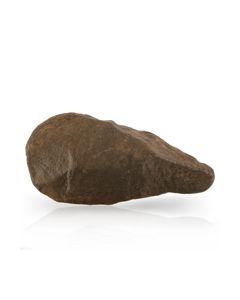 Paleolithic hand axe
Paleolithic hand axePrehistoric stone tool. It was the universal tool of the older Stone age and could be used as a borer or a cutter. From a Swiss museum collection. Found in the Algerian Sahara desert.
Price: on request Paleolithic hand axe
Paleolithic hand axePrehistoric stone tool. It was the universal tool of the older Stone age and could be used as a borer or a cutter. From a Swiss museum collection. Found in the Algerian Sahara desert.
Price: on request Large prehistoric hand axe
Large prehistoric hand axeMassive Paleolithic stone tool. It was the universal tool of the older Stone age and could be used as a borer or a cutter. From a Swiss museum collection. Found in Algeria, North Africa.
Price: on request Large Paleolithic hand axe
Large Paleolithic hand axePrehistoric stone tool. It was the universal tool of the older Stone age and could be used as a borer or a cutter. From a Swiss museum collection. Found in Foggaret Ezzaouia, Algeria, North Africa.
Price: on request Paleolithic hand axe
Paleolithic hand axePrehistoric stone tool. It was the universal tool of the older Stone age and could be used as a borer or a cutter. From a Swiss museum collection. Found in Erg Mehedjibat, Algeria, North Africa.
Price: on request Large Paleolithic hand axe
Large Paleolithic hand axePrehistoric stone tool. It was the universal tool of the older Stone age and could be used as a borer or a cutter. From a Swiss museum collection. Found in Erg Mehedjibat, Algeria, North Africa.
Price: on request Paleolithic hand axe
Paleolithic hand axePrehistoric stone tool. It was the universal tool of the older Stone age and could be used as a borer or a cutter. From a Swiss museum collection. Found in Erg Mehedjibat, Algeria, North Africa.
Price: on request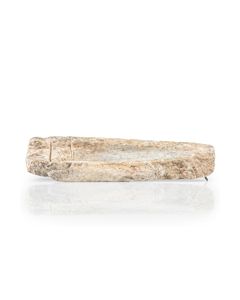 Bronze Age casting mould for a chisel
Bronze Age casting mould for a chiselOne half of a stone mould for bronze casting. The equipment is from a workshop of the 2nd Millennium BC, probably from the Carpathian Basin. From the famous Guttmann Collection. This mould was published in a work by Born and Hansen.
Price: on request Bronze Age casting mould for a chisel
Bronze Age casting mould for a chiselOne half of a stone mould for bronze casting. The equipment is from a workshop of the 2nd Millennium BC, probably from the Carpathian Basin. From the famous Guttmann Collection. This mould was published in a work by Born and Hansen.
€1,400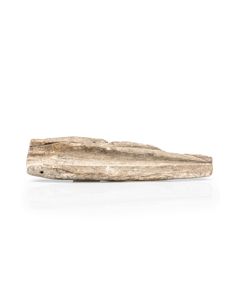 Bronze Age casting mould for a lance head
Bronze Age casting mould for a lance headOne half of a stone mould for bronze casting. The equipment is from a workshop of the 2nd Millennium BC, probably from the Carpathian Basin. From the famous Guttmann Collection. This mould was published in a work by Born and Hansen.
€1,400 Sassanian intaglio with griffin
Sassanian intaglio with griffinPerfectly preserved ring stone made of orange carnelian. It shows a winged hybrid creature with the body of a lion. With inscription in Pahlavi, the Middle Persian script of the Sassanids.
Price: on request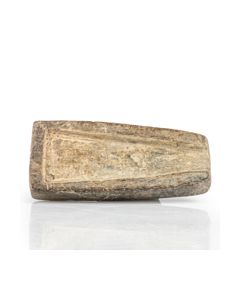 Bronze Age casting mould for a flat axe
Bronze Age casting mould for a flat axeOne half of a stone mould for bronze casting an axe head. The equipment is from a workshop of the 2nd Millennium BC, probably from the Carpathian Basin. From the famous Guttmann Collection. This mould was published in a work by Born and Hansen.
Price: on request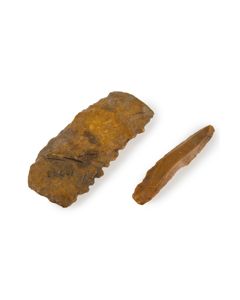 Two Neolithic stone tools from Egypt
Two Neolithic stone tools from EgyptThe Stone Age saw and the slender blade are finely worked. From a 100 year old museum collection.
Price: on request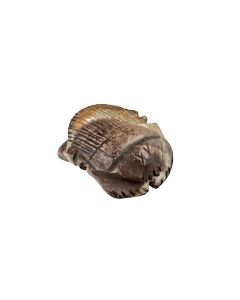 Scarab made of banded stone
Scarab made of banded stoneThis fantastic funerary scarab captivates with the beautiful banded stone it was made of. A piece from the Greco-Roman period.
Price: on request Egyptian model vessels of a founding ceremony
Egyptian model vessels of a founding ceremonyA group of seven miniature bowls and three miniature vases made of clay. Once filled with offerings and used ritually during a foundation stone laying ceremony. Dating to the Old Kingdom, around 2500 BC.
Price: on request Classicist intaglio with eleventh labour of Hercules
Classicist intaglio with eleventh labour of HerculesA masterpiece of classicist stone cutting. The large intalgio made of white chalcedony shows the 11th labour of Hercules. An early 19th century work, when classicism dominated the arts in Europe.
€3,800 Conoid stamp seal
Conoid stamp sealMade from beautiful mottled stone during Iron Age II. The seal is from southern Anatolia or northern Syria and is engraved with a religious scene.
Price: on request Egyptian green stone vessel
Egyptian green stone vesselThe stone vessel is made of beautiful green serpentine. From the collection of Egyptologist Professor Wiedemann. Middle Kingdom of Ancient Egypt.
Price: on request Small axe head from the New Stone Age
Small axe head from the New Stone AgeCompact stone axe from the 3rd Millenium BC. Found on the Danish island of Moen.
Price: on request Minoan stone bowl
Minoan stone bowlElegant vessel from Crete, shaped like a bird's nest, possibly a container for ointments. Dating to the late Minoan period around 1500 BC.
€4,350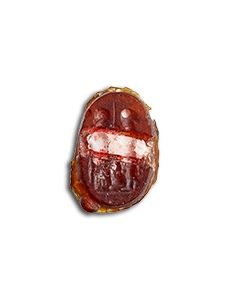 Roman intaglio with two warriors
Roman intaglio with two warriorsThe scene shows two warriors in a conversation. The glass imitates natural stone with a white inclusion.
Price: on request Egyptian stone beaker
Egyptian stone beakerThe elegant stone vase was probably used as an ointment vessel. 5th to 6th dynasty of ancient Egypt, Old Kingdom.
Price: on request Conical Old Kingdom stone vessel
Conical Old Kingdom stone vesselThe elegant stone vase is made of wonderful banded alabaster. 5th to 6th dynasty, Old Kingdom.
€1,800 Slender Egyptian stone beaker
Slender Egyptian stone beakerThe small and tall stone vessel is made of alabaster. From the collection of Egyptologist Professor Wiedemann.
Price: on request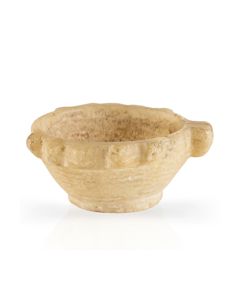 Egyptian alabaster bowl from Luxor
Egyptian alabaster bowl from LuxorThe small stone vessel is an offering bowl for libation. From the collection of Egyptologist Professor Wiedemann. 12th to 18th dynasty of Ancient Egypt
Price: on request Egyptian alabaster vessel
Egyptian alabaster vesselLarge container for this type of vessel. A thin-walled and very skilfully crafted specimen. Made between the 12th and 18th dynasty of Ancient Egypt.
Price: on request Egyptian stone vessel from Luxor
Egyptian stone vessel from LuxorThe cosmetic vessel is of a rare type. From the collection of Egyptologist Professor Wiedemann. Middle Kingdom of Ancient Egypt
Price: on request

